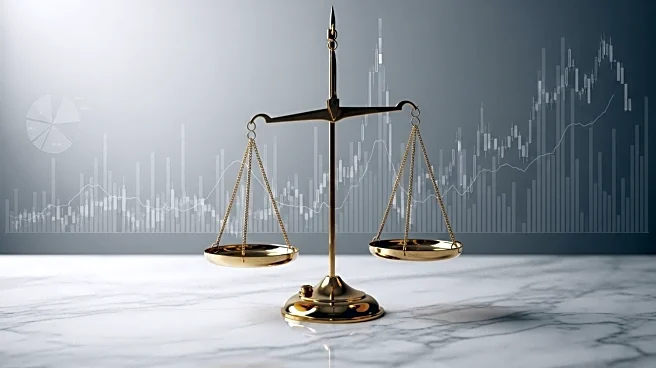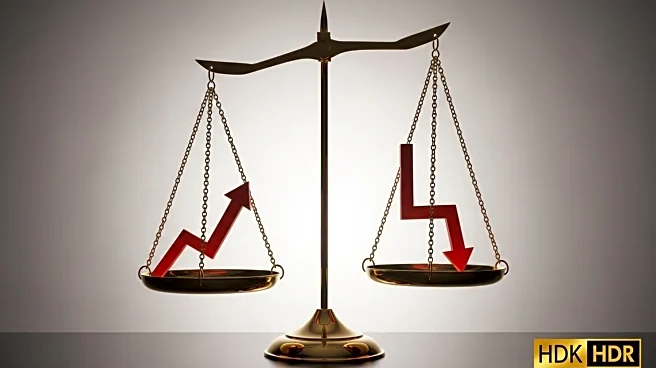What's Happening?
Gold futures experienced a decline following the Federal Reserve's decision to reduce its benchmark interest rate by 25 basis points. On September 18, December gold contracts settled $16.40 lower, marking a 0.44% decrease to $3,678.20. Silver futures also saw a slight drop, closing at $42.12, down by $0.03 or 0.08%. The decline in precious metals is attributed to the strengthening U.S. dollar over the past two trading sessions. Market analysts suggest that the Federal Reserve's measured approach to monetary easing, which included a quarter-point rate reduction, fell short of some investors' expectations for a more aggressive cut. This has led to a reassessment of the Fed's dovish stance. Additionally, recent unemployment data showed a sharp decline in initial jobless claims, indicating some resilience in the labor market, although broader employment trends remain concerning.
Why It's Important?
The Federal Reserve's interest rate decisions have significant implications for the U.S. economy and financial markets. The recent rate cut, while intended to stimulate economic activity, has not met the expectations of some investors who anticipated a more aggressive approach. This has led to a reassessment of investment strategies, particularly in safe-haven assets like gold. The decline in gold prices reflects the complex interplay between monetary policy expectations, currency dynamics, and investor sentiment. As gold typically benefits from lower interest rates and concerns over currency debasement, the current situation highlights the challenges faced by investors in navigating the evolving economic landscape.
What's Next?
Future Federal Reserve meetings will be closely watched for any indications of further monetary easing. Investors will be looking for signals that could influence their strategies in precious metals and other asset classes. The ongoing strength of the U.S. dollar and labor market trends will also play a crucial role in shaping market dynamics. Stakeholders, including financial analysts and investors, will need to remain vigilant in assessing the impact of these developments on their portfolios.










